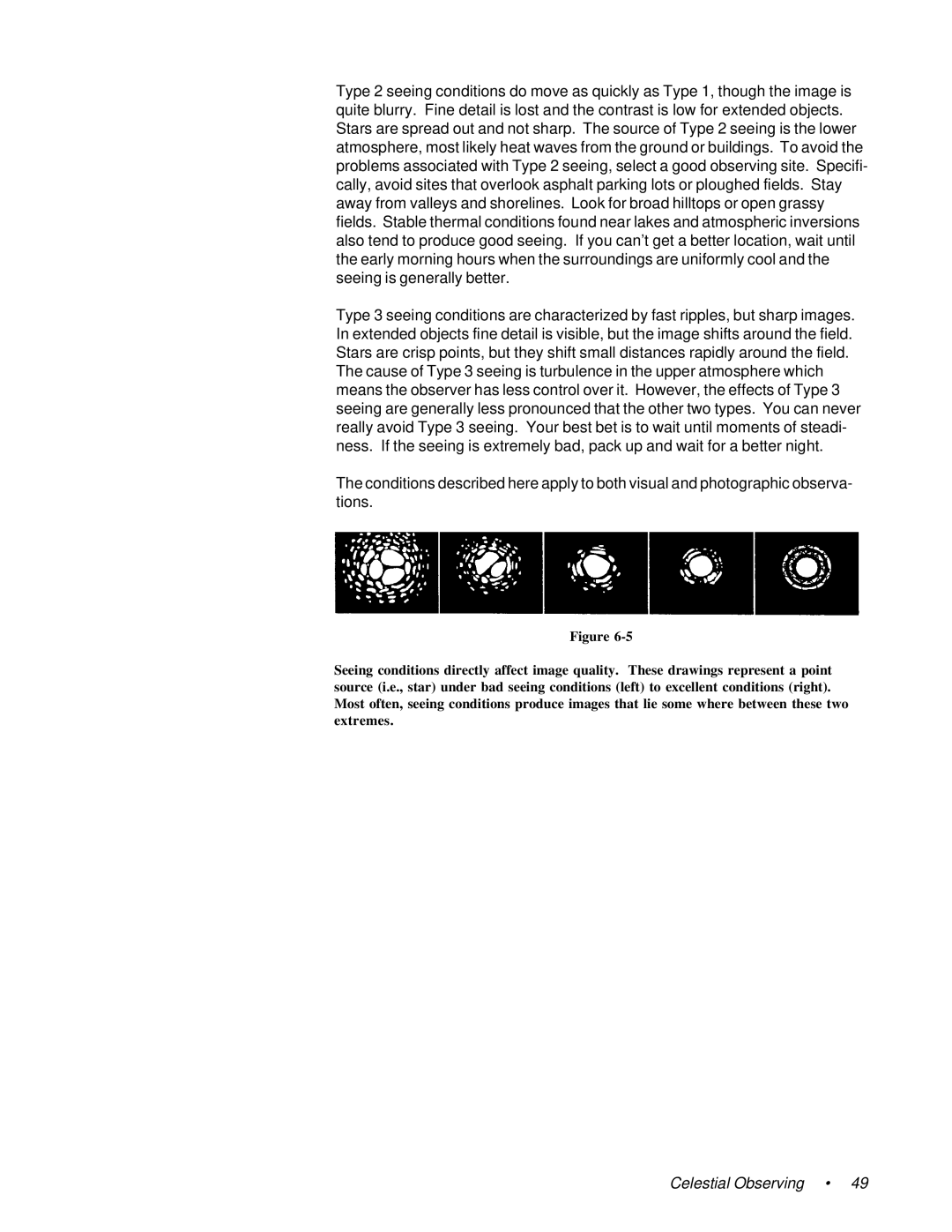
Type 2 seeing conditions do move as quickly as Type 1, though the image is quite blurry. Fine detail is lost and the contrast is low for extended objects. Stars are spread out and not sharp. The source of Type 2 seeing is the lower atmosphere, most likely heat waves from the ground or buildings. To avoid the problems associated with Type 2 seeing, select a good observing site. Specifi- cally, avoid sites that overlook asphalt parking lots or ploughed fields. Stay away from valleys and shorelines. Look for broad hilltops or open grassy fields. Stable thermal conditions found near lakes and atmospheric inversions also tend to produce good seeing. If you can’t get a better location, wait until the early morning hours when the surroundings are uniformly cool and the seeing is generally better.
Type 3 seeing conditions are characterized by fast ripples, but sharp images. In extended objects fine detail is visible, but the image shifts around the field. Stars are crisp points, but they shift small distances rapidly around the field. The cause of Type 3 seeing is turbulence in the upper atmosphere which means the observer has less control over it. However, the effects of Type 3 seeing are generally less pronounced that the other two types. You can never really avoid Type 3 seeing. Your best bet is to wait until moments of steadi- ness. If the seeing is extremely bad, pack up and wait for a better night.
The conditions described here apply to both visual and photographic observa- tions.
Figure
Seeing conditions directly affect image quality. These drawings represent a point source (i.e., star) under bad seeing conditions (left) to excellent conditions (right). Most often, seeing conditions produce images that lie some where between these two extremes.
